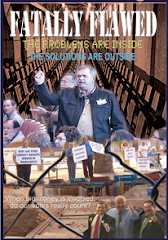
West Virginia In Peril
Tue, 05/05/2009 - 1:27pm.
A BUZZFLASH NEWS ANALYSIS
by Meg White
It's kind of like asking whether or not one should sell a convicted arsonist a stockpile of a certain type of industrial flame thrower that is notorious for misfiring.
Four lawmakers sent a letter to U.S. Chemical Safety and Hazard Investigation Board President John Bresland requesting an investigation into Bayer's continued use of the highly hazardous chemical methyl isocyanate (MIC, also sometimes abbreviated as MIS) in light of last year's deadly explosion at a West Virginia chemical facility.
Chairman of the House Energy and Commerce Committee Henry Waxman (D-CA), Chairman of the Senate Commerce, Science and Transportation Committee Jay Rockefeller (D-WV), Chairman of the House Subcommittee on Oversight and Investigations Bart Stupak (D-MI) and Chairman of the House Energy and Environment Subcommittee Ed Markey (D-MA) questioned Bayer's need to produce a chemical that was at the heart of what Greenpeace calls the "world's worst industrial disaster."
The Bhopal disaster claimed upwards of 20,000 lives and caused countless injuries and untold disfigurement when a leak of MIC emanated from a Union Carbide plant in Bhopal, India in 1984. The Congressional letter to Bresland notes that another major chemical company, DuPont, phased out MIC use after the disaster, but Bayer did not.
The circumstances of the Bayer explosion suggest the incident easily could have become another Bhopal. Bayer's West Virginia facility is the only chemical plant in the nation that uses and stores such quantities of MIC, a chemical used to make pesticides and fertilizers. The August 2008 explosion killed two employees and endangered the surrounding community, as the highly flammable and combustible MIC was dangerously close to the detonation. For the rest of the story.
















